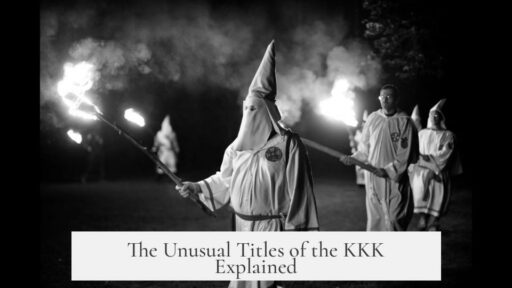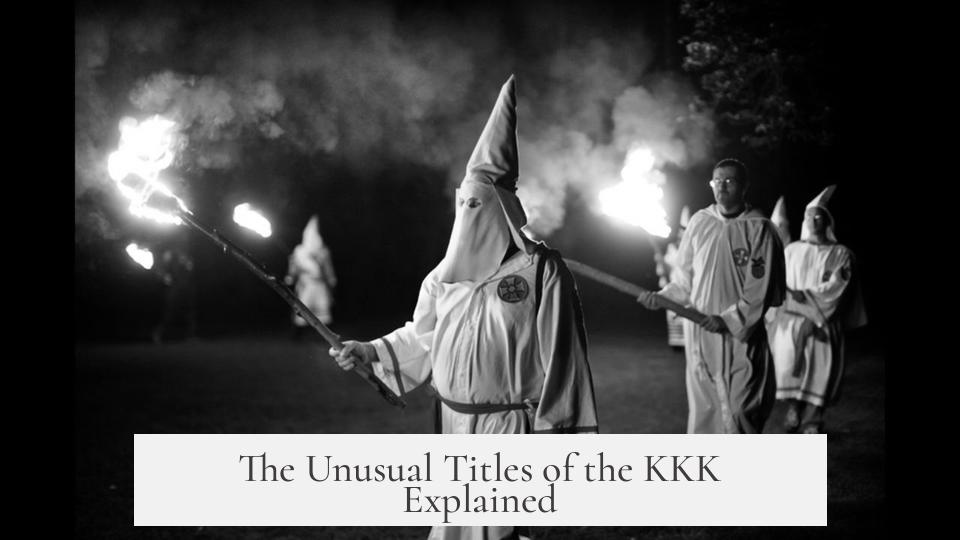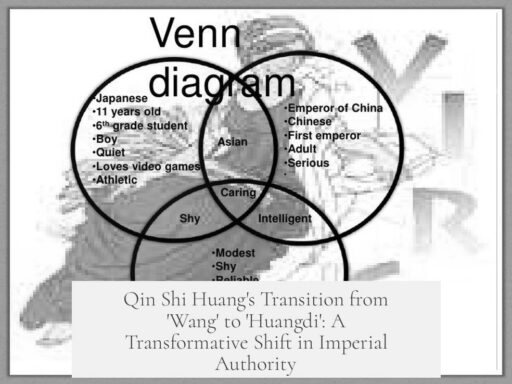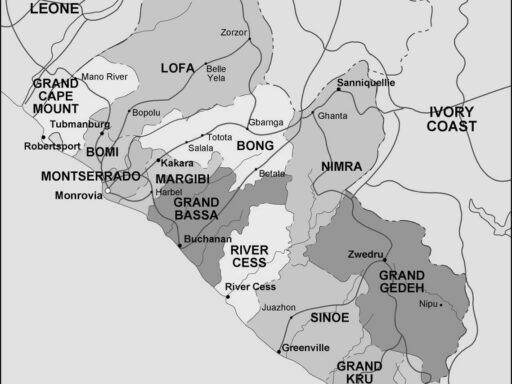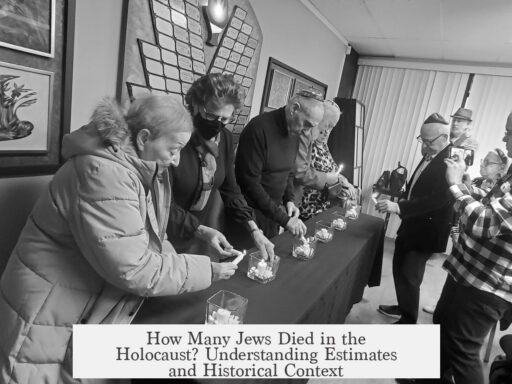The KKK adopted weird titles because they drew from a long-standing American tradition of secret societies. These titles created a sense of exclusivity and power, following fraternal groups like the Freemasons and the Sons of Malta. The unusual names were part of the Klan’s ritualized hierarchy and psychological strategy to inspire fear and mystery.
In 19th-century America, secret societies were common. These groups often used grand or mysterious titles for their leaders and members. The Know-Nothings and Freemasons are examples. Their leadership roles included names like “Grand Chiefs” or “Grand Sachems.” This tradition gave the KKK a ready-made model to copy.
The Klan’s very name has fraternal roots. It comes from the Greek word “Kuklos,” meaning “circle.” This term hints at ideas of unity and secrecy. Adding alliteration, they spelled it as “Ku Klux Klan.” The name echoed other groups like the Knights of the Golden Circle, a pre-Civil War secret society. This link showed the Klan’s deep connection to older fraternal orders.
The Klan’s titles included “Grand Wizard,” “Grand Dragon,” “Grand Titan,” and “Grand Cyclops.” Each rank conveyed a strong, unique identity. These names were distinct but followed the pattern of exaggerated ranks similar societies used. The goal was to make the hierarchy sound impressive and mysterious.
Some believe Albert Pike, a prominent Mason, influenced these titles. He played a major role in Masonry, known for intricate rituals and ranks. Although evidence about Pike’s direct ties to the Klan is unclear, the Klan clearly borrowed Masonic elements. For example, they used similar oaths and secret codes. These signs demonstrate Masonry’s impact on the Klan’s structure.
Additionally, the Sons of Malta secret society influenced the Klan. The Sons were known for their theatrical titles, costumes, and prank-like rituals. Many former Sons of Malta members joined the Klan after the Civil War. This crossover explains the Klan’s theatrical and eerie titles. The prankish initiation resemble the Sons’ style.
The Klan’s codewords and titles also drew from sensational fiction popular in the 19th century. Instead of purely Masonic terms, the group chose words with ominous and literary tones, such as “Dismal” and “Dreadful.” These words emphasized an intimidating and threatening image. The theatrical quality helped reinforce the Klan’s role as terrifying enforcers.
The psychological intent behind the weird titles was clear. The Klan saw itself as a ghostly force avenging the Confederacy and protecting white society. Their members wanted to be seen as supernatural beings, witches, or revenants rather than ordinary men. The grandiose titles heightened this impression. They created fear in their victims, who sometimes thought the Klan were ghosts or demons.
The local culture in Pulaski, Tennessee, where the Klan formed, made these titles expected rather than odd. At the time, Pulaski had many Masonic lodges and Sons of Malta members. These groups embraced similar grand titles and secret rituals. The Klan simply followed established regional customs for secret groups. Their use of bizarre ranks was a familiar practice, extending an existing tradition of pageantry and ritual.
| Key Points |
|---|
|
